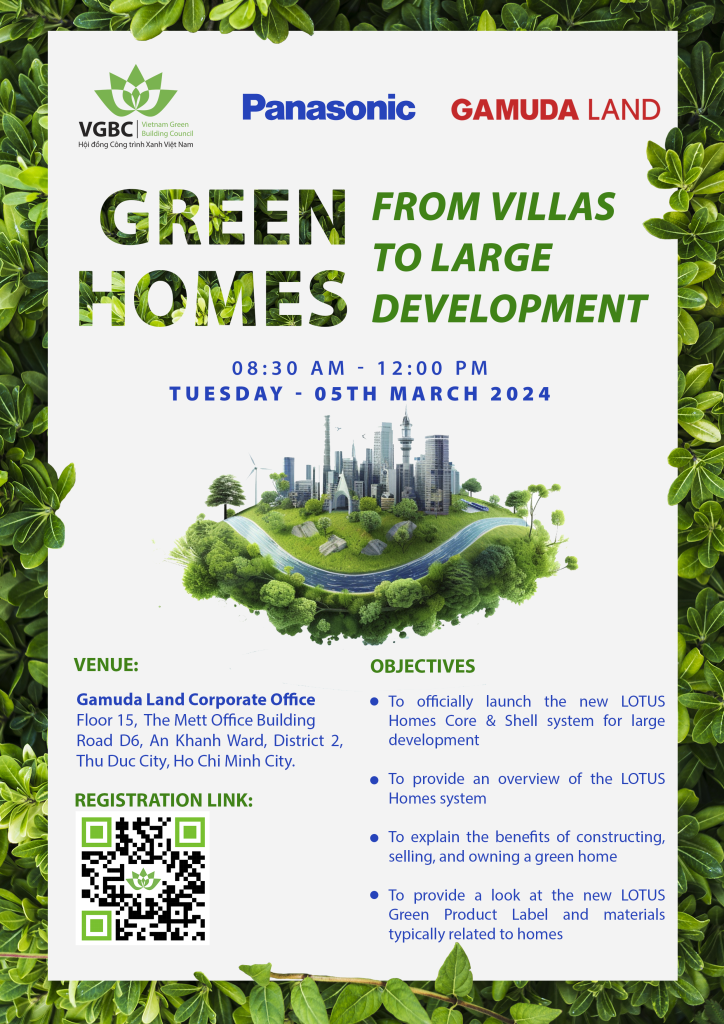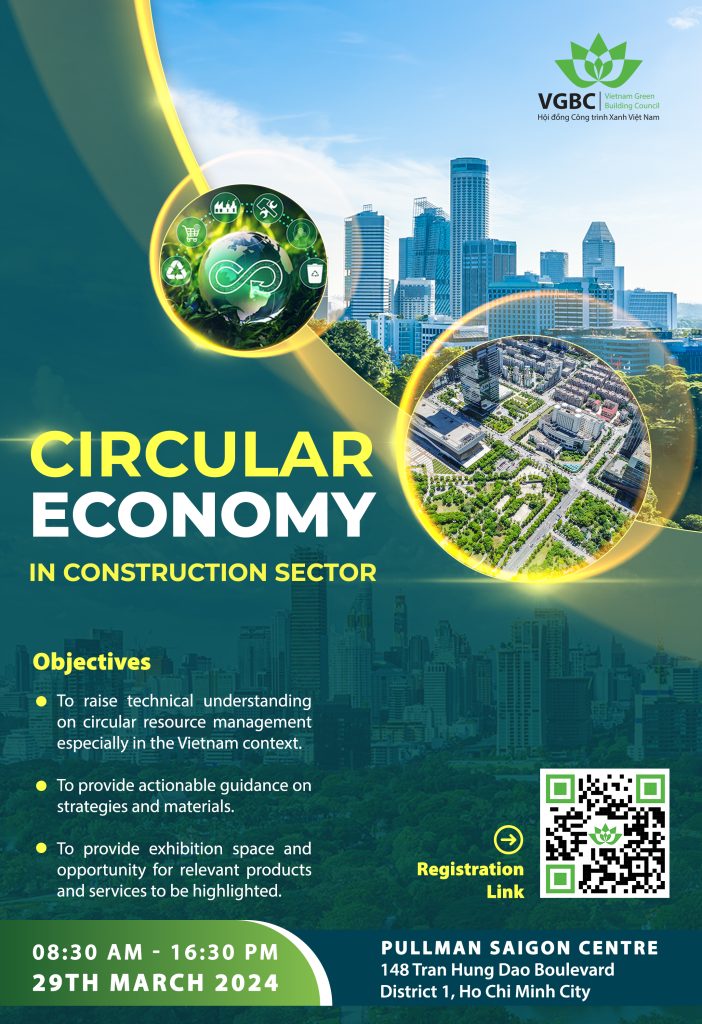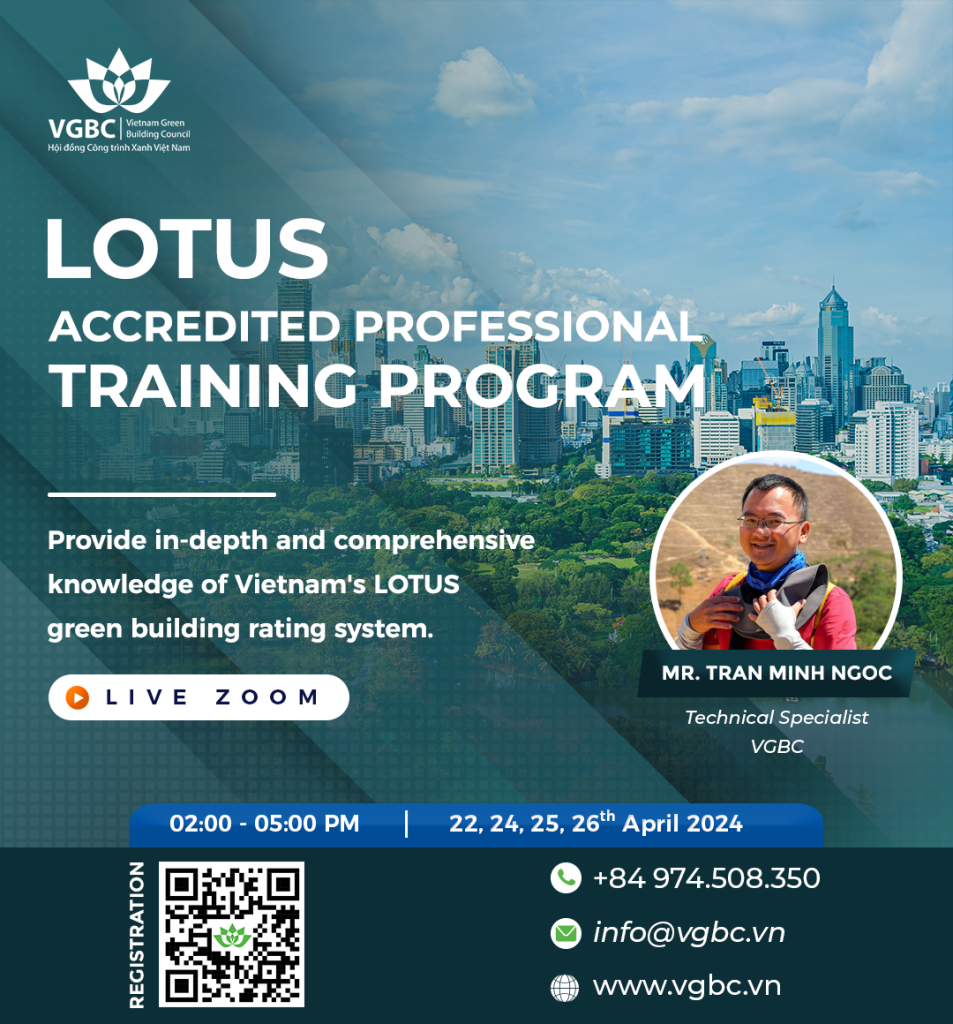Understand costs of green building
[/et_pb_text][et_pb_text _builder_version=”3.20.2″]Green Building Certifications
Several green building rating systems are available in Vietnam today, including LEED, LOTUS and Green Mark (from Singapore BCA). By the end of September 2020, the country has 83 LEED-certified projects (with 125 projects in certification process) and 30 LOTUS-certified projects (with 40 projects in certification process). The number of projects with Green Mark certification can not be publicly validated, but the Singapore national green building label has mainly been applied by Singaporean developers only. (Check Market Update).
Worldwide, various green building certification systems have been developed.
In 1990, the first version of BREEAM was launched in the UK.
In 1998, the first version of LEED was launched in the US.
In 2002, the Green Building Council of Australia introduced Green Star rating system.
In 2005, the Building and Construction Authority (BCA) of Singapore introduced Green Mark rating system.
In 2010, Vietnam Green Building Council (VGBC) introduced LOTUS, the first green building rating system that considered Vietnam’s building regulations, climate conditions and construction practices.
The Dodge Data & Analytics World Green Building Trends 2018 survey indicated that only 13% of respondents from Vietnam were currently doing the majority of their projects green, but 61% expected to do new green commercial construction in the next three years. Market and client demands were the main driver for green building, while the lack of policy support, lack of trained green building professionals and higher first costs seemed to be the main barriers to green building adoption in the country.
[/et_pb_text][et_pb_text _builder_version=”3.20.2″]The business case for Building green
Knowing your reason for pursuing green certification for your building sets the tone for the rest of your project. Common motives include:
- Reducing operations and maintenance costs
- Keeping building occupants healthy
- Protecting the environment
- Differentiation from market competition
- Corporate mandate
The business case for green building depends on the nature of ownership. For example, a government agency may choose to build green for the benefit of their employees and/or to secure life-cycle cost savings in operations, whereas a property developer may consider if they can get sufficient marketing benefits and sales potential from the green certification. In addition, the market is also constantly evolving due to the increased awareness of green building benefits and urgency. The fluctuations in energy prices may also impact the business case for green building.
It’s important for the project owner or developer to have a goal-setting sessions with key stakeholders early on before the design even starts. The goal-setting sessions should provide direction for project teams when making budget-driven tradeoffs later in design, many of which potentially involve sustainability measures.
In a more traditional design process, there is often a sequential “handoff” and limited feedback between the architect and the engineers. For example, a mechanical engineer is often insulated from the architect’s building envelope design considerations, yet that set of decisions is often critical in determining the size and cost of the HVAC systems, which can account for up to 20% of a building’s cost. When the project is over budget (which happens more often than not), the easy options usually involve lowering the costs of HVAC systems by specifying less efficient equipment, low-performance glazing and insulation, etc. As a result, key design decisions are often made without considering long-term operations.
A green building certification system can provide the project stakeholders with a common and holistic framework to consider building operating costs, comfort levels and other sustainability issues during project delivery process.
Two commonly used green building certification programs in Vietnam are LEED (developed by US Green Building Council) and LOTUS (developed by Vietnam Green Building Council).
[/et_pb_text][et_pb_text _builder_version=”3.20.2″]Manage first costs in building green
Higher first costs are often quoted as the foremost reason by investors who choose not to build green. In the early days of LEED, uncertainty regarding the system’s requirements coupled with inexperience resulted in substantial cost premiums for LEED-certified buildings, as high as 15-25% above conventional construction costs in some cases. Not surprisingly, the added cost of green construction meant many project teams stuck to conventional practice.
Today, as the green building industry has matured, sustainable building products and technologies are readily available and more affordable. Several studies have documented that the “green premium” is much less than initially feared.
What are the cost implications?
Many studies indicated that construction costs (hard costs) of green certified projects are well within the range of non-green projects. However, there still some cost items that are indeed directly related to green certification. These costs are mostly soft costs. These costs include:
- Registration and assessment fees
- Cost of documentation time and effort
- Cost of extra research and design
- Cost of commissioning and modeling for compliance
- Additional construction activities for compliance
1. The fees
The most direct cost is also the smallest: the fees you pay to the assessment organization (VGBC for LOTUS, GBCI for LEED) to register and then to certify your project.
2. Cost of Documentation time and effort
Either for LEED or LOTUS, someone has to compile and submit the documentation and generally manage the compliance process. This cost could be for an outside consultant hired just for that task, someone on the staff of the design firm, the contractor, or the owner. It could be tough for someone doing it for the first time, but much easier for someone who has done it and has an effective tracking system.
It helps if the team is experienced and each person doesn’t need too much coaching to provide her pieces of the documentation. It also depends how many credits you’re going after, and, to some extent, which ones. It may take a few hundred hours to pull everything together for a big complicated project; simple and small projects should take less time and effort.
3. Cost of extra research and design
To realize any high-performing building the team must develop a range of scenarios, run simulations to determine how they will perform and prepare cost estimates to price them out. They also must investigate alternative products and materials and explore the feasibility of new technologies. All these steps take time and effort – how much depends a lot on how experienced the team is and how aggressive the performance goals are for the project.
4. The cost of commissioning and modeling for compliance
Commissioning may seem like a big investment, but it’s cheap compared to the cost of call-backs, fixes, and inefficiencies that are likely if you don’t do it. For this reason, many large owners, require commissioning for all their projects, so for them it is not an extra green cost (they’d do it anyway).
Energy modeling is different. While energy modeling should be used to inform the design process for every building, they are most useful during early design phases. The models that are required for LEED or LOTUS documentation, on the other hand, are an added step, done late in the design process and often with different parameters. They may start at $5,000 for smaller or less complex projects and goes up for more complex ones.
For small projects pursuing LOTUS, it is possible to earn energy points using the prescriptive path without doing such a model.
5. Costs of construction
If the design team is experienced and the goals aren’t too aggressive (Certified or Silver, for example), there may be no overall added cost because most cost increases can be offset with savings somewhere else. (For example, a smaller HVAC system resulting from a more efficient envelope).
If a project only aims for a minimum green goal (for example, LOTUS Certified), there are many low-cost green measures that can reasonably be incorporated in most situations, such as:
- An improved building envelope with lower WWR, using concrete block (with proper installation and good quality brick) and some shading mechanism;
- LED lighting
- Efficient HVAC equipment (refer QCVN 09:2017)
- Efficient water fixtures
- Non-baked material for interior partition
- Low-VOC paints
The above six measures can already help projects go a long way towards minimum level of LOTUS Certification. From here, projects can targets a wider variety of sustainable measures for higher green goals, depending on budget and experience.
On the materials side, using greener products (for example, ones that are locally sourced, made from recycled content, or rapidly renewable materials, or certified) could be more expensive. This cost could be compounded by the scheduling challenges and delays created by using green, non-standard products if the project team was inexperienced or the decision to build green was made too late.
On the labor side, there may be additional time burden of managing the construction site in accordance with green building principles, usually related to:
- Construction Activity Pollution Prevention
- Construction Waste Management
- Reused structures and/or recycled materials
- Construction IAQ Management Plan
For projects pursuing higher green goals, some advanced, innovative technologies can be involved and have big cost impact, such as onsite renewable energy generation, demand-control ventilation system, etc.
It should be recognized that both potential increases in hard and soft costs due to green specifications are coming down as green technologies, processes and materials become more widely available. Market competition also acts as a force to keep these costs down to reasonable levels.
How to minimize additional cost of Green Buildings?
Best practices from past projects include:
- Start early:
As with any aspect of the building program, a project’s environmental and performance goals should be established as early as possible, whether or not green certification is pursued. Green building goals should be seen as simply part of the building program, rather than something outside of the normal process.
- Experience:
As with any specialized project requirements, selecting design and construction teams experienced with green building certification will increase the odds of success.
- Applying Integrated Design Process:
Green building certification can be pursued with the conventional design-bid-build project delivery; however, the construction management approach, with the resulting earlier involvement of the construction team during design, is particularly well-suited to the integrated design process.
Certification programs like LEED and LOTUS encourage the full project team to collaborate to achieve the project’s performance goals. The most effective approach to certification is in fact to forget the points. When teams focus first on broader goals, such as reducing energy use or improving water efficiency, more integrated, cost-effective solutions can often be developed.
For effective process performance optimization, the first step is to reduce the loads (smart design), then to meet the loads efficiently (efficient equipment). Then, only after these have been accomplished, considering greening the residual supply required to meet the reduced loads (renewable energy, rainwater harvest, etc.). Green design is expensive when it only consists of adding expensive technologies to an essentially conventional project.
Quantitative analysis, such as energy modeling, is required to document performance for LEED or LOTUS certification. However, the results of this analysis can be used most effectively to inform the design process, rather than simply documenting performance after the fact. The Davis Langdon study recommends that energy and cost models be combined “to make a very effective decision-making tool, preferably early in design.”
Energy modeling can be used to understand where the big impacts are for a project type in a particular climate, allowing the design team to optimize the design. When leveraged in this fashion, quantitative analysis becomes a value-added tool for reducing a project’s cost of ownership.
[/et_pb_text][/et_pb_column][/et_pb_row][/et_pb_section]
 Tiếng Việt
Tiếng Việt



